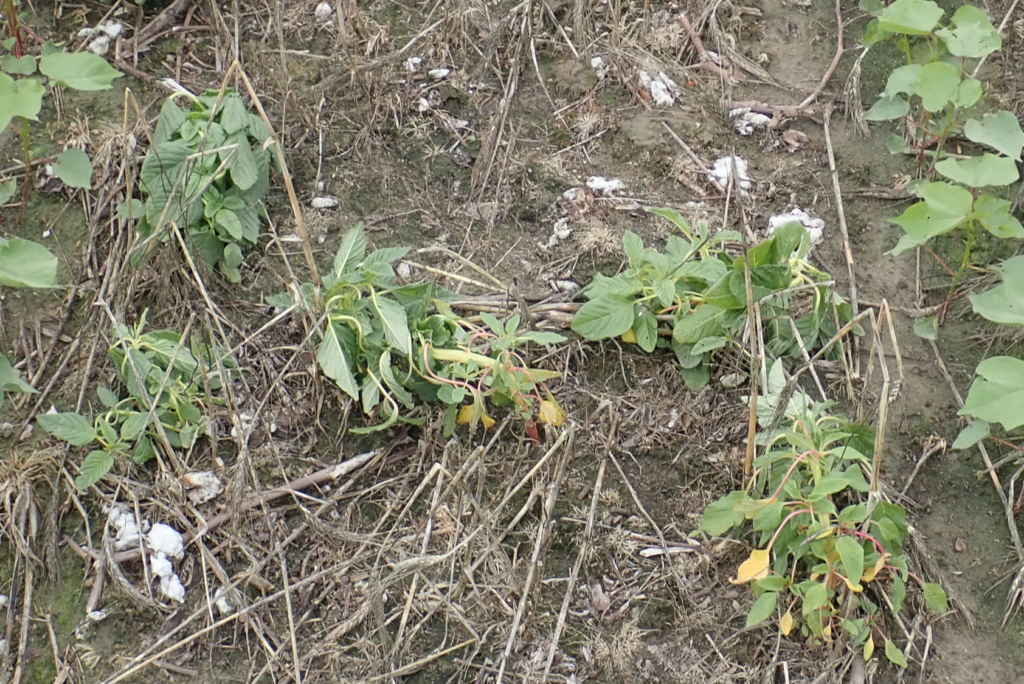Dicamba Registration Decision Here
go.ncsu.edu/readext?747592
en Español / em Português
El inglés es el idioma de control de esta página. En la medida en que haya algún conflicto entre la traducción al inglés y la traducción, el inglés prevalece.
Al hacer clic en el enlace de traducción se activa un servicio de traducción gratuito para convertir la página al español. Al igual que con cualquier traducción por Internet, la conversión no es sensible al contexto y puede que no traduzca el texto en su significado original. NC State Extension no garantiza la exactitud del texto traducido. Por favor, tenga en cuenta que algunas aplicaciones y/o servicios pueden no funcionar como se espera cuando se traducen.
Português
Inglês é o idioma de controle desta página. Na medida que haja algum conflito entre o texto original em Inglês e a tradução, o Inglês prevalece.
Ao clicar no link de tradução, um serviço gratuito de tradução será ativado para converter a página para o Português. Como em qualquer tradução pela internet, a conversão não é sensivel ao contexto e pode não ocorrer a tradução para o significado orginal. O serviço de Extensão da Carolina do Norte (NC State Extension) não garante a exatidão do texto traduzido. Por favor, observe que algumas funções ou serviços podem não funcionar como esperado após a tradução.
English
English is the controlling language of this page. To the extent there is any conflict between the English text and the translation, English controls.
Clicking on the translation link activates a free translation service to convert the page to Spanish. As with any Internet translation, the conversion is not context-sensitive and may not translate the text to its original meaning. NC State Extension does not guarantee the accuracy of the translated text. Please note that some applications and/or services may not function as expected when translated.
Collapse ▲EPA issued a press release on October 27, 2020, approving new five-year over-the-top (for dicamba-tolerant cotton and soybean) registrations for Engenia and XtendiMax with VaporGrip and extending the over-the-top registration of Tavium Plus VaporGrip.
Key label changes to mitigate off-target movement of dicamba include the following:
- Requirement of a pH buffering agent or Volatility Reduction Agent (VRA) with all over-the-top applications of dicamba products to dicamba-tolerant cotton and soybean.
- The downwind buffer has been increased to 240 feet; the downwind buffer to threatened or endangered species areas has increased to 310 feet.
- No over-the-top applications of dicamba after June 30 for soybean or July 30 for cotton.
- Simplified label and use directions for applicators to more easily determine when and how to properly apply dicamba.
For additional information, read the entire EPA News Release.
It is also important to note that training remains an annual requirement. Please look to your County Extension agent for information regarding the Auxin Herbicides-Best Management Practices for 2021. While in the midst of the Coronavirus pandemic, the 2021 training will likely look different from in the past. However, NC State University and N.C. Department of Agriculture and Consumer Services are committed to ensuring North Carolina applicators have ample options and opportunities for the auxin training.
Lastly, EPA has offered the states flexibility in tailoring label requirements to fit special local needs (24(c) labels). North Carolina has taken advantage of these labels in the past, so stay tuned for updates from NCDA&CS concerning additional application requirements or changes here in North Carolina.



